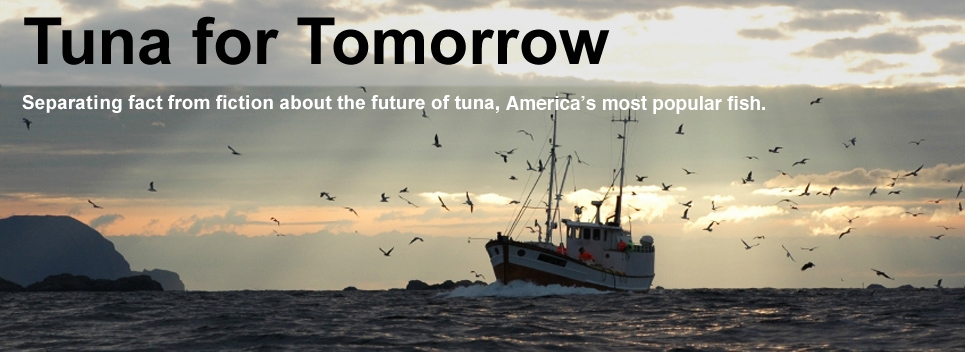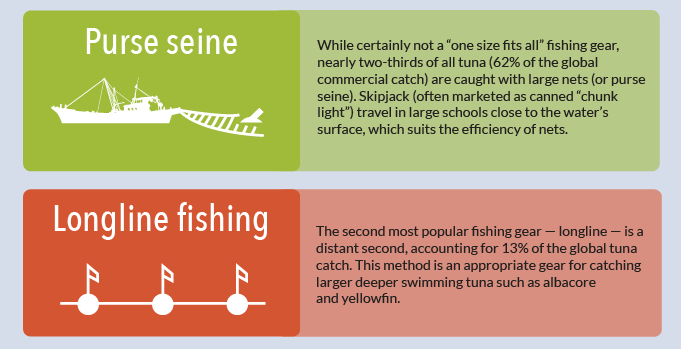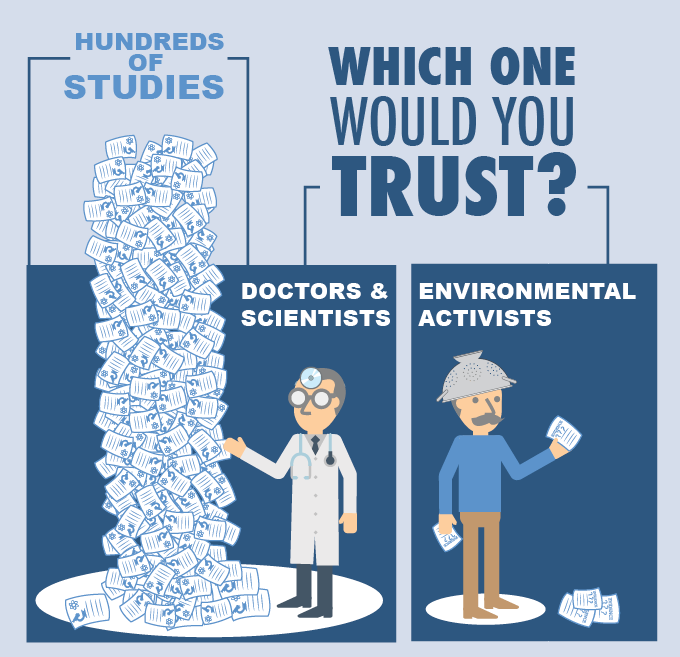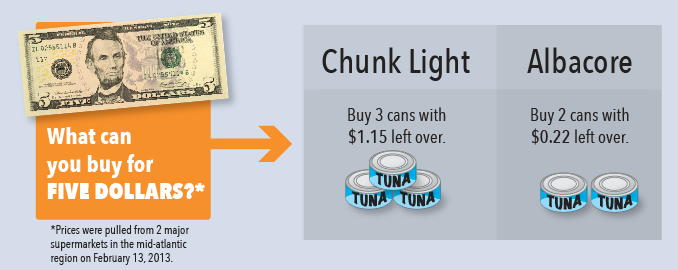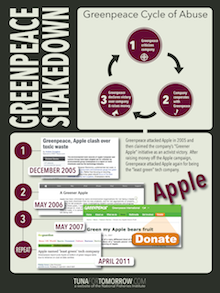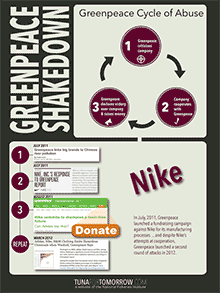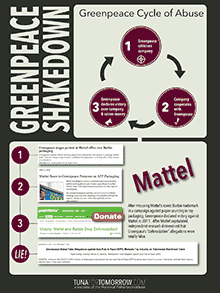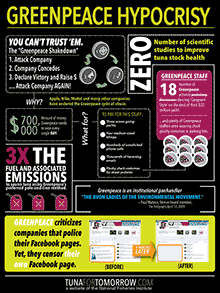A recent article by environmental activist Tim Zimmermann at Outside Magazine raises the question, “what fish can I eat?” Disregarding the overwhelming scientific consensus, Zimmermann gives the answer, “you should eat no fish at all.” Below are the top four things Outside Magazine got wrong about tuna.
1) Ahi tuna? “Almost all of it is caught on pelagic longlines, which are 40-plus miles of floating line dangling a baited hook every three feet. Longlines catch everything else in the habitat.” That’s called bycatch, a somewhat bloodless term for a fishing method that indiscriminately hooks as many as 150,000 sea turtles annually, along with tens of thousands of seabirds, whales, sharks, dolphins, and porpoises.
Tuna is caught using several different methods, and, according to the International Seafood Sustainability Foundation can rate among the lowest bycatch rates for mass caught commercial fish. Furthermore, the United States canned tuna industry has long applied strict guidelines to reduce bycatch, including adhering to a stringent dolphin-safe practice that pledges companies “do not and will not utilize tuna caught in a manner that harms dolphins.”
2) Take albacore tuna. If it was caught by trolling or with a pole, in the North Atlantic or Pacific, Seafood Watch rates it a Best Choice. But if it was caught anywhere in the world on a longline—except off Hawaii and in the U.S. Atlantic, which have strict bycatch limits—it gets a red Avoid rating. Will the person selling you the fish know how it was caught and where, and can you be sure that person’s information is accurate?
Groups such as the International Seafood Sustainability Foundation [ISSF] are dedicated to ensuring that tuna stocks remain healthy and viable for future generations to enjoy. ISSF is made up of acclaimed scientists, leaders in industry, and environmental champions, all of whom work with the tuna industry providing technical support and the latest scientific work. Â Independently, the American tuna industry also works to maintain sustainable standards of fishing and have taken pledges to prevent harm against non-targeted fish.
3) There are a multitude of coastal zones around the globe where mussels can grow in abundance. And while they don’t pack the omega-3 wallop that salmon does, they do deliver a shot—three servings a week gets you to the recommended minimum. Another bonus: being low on the food chain, mussels have little mercury, more than 30 times less than larger predator species like swordfish and tuna.
There has never been a case of mercury poisoning, as the result of the normal consumption of commercial seafood, found in any peer-reviewed medical journal in the U.S. The scientific consensus points towards overwhelming evidence that increasing the amount of fish Americans eat would lead to better overall health.
4) I realize that an interesting thing happens when you approach seafood with sustainability and health in mind: you end up eating a diverse diet that pushes you lower down the food chain and away from the rut of salmon, shrimp, and tuna, the most commonly eaten seafood in the U.S.
One of reasons why tuna is so widely consumed is that it is accessible and versatile. Canned tuna represents a perfect combination of affordability, taste, and nutrition that few other products can match. By asking for the American public to stop eating as affordable as canned tuna, Zimmermann is asking for many to stop eating fish altogether, which would have serious health consequences.


